CD21 Rabbit Polyclonal Antibody

cat.: ER1706-56
| Product Type: | Rabbit polyclonal IgG, primary antibodies |
|---|---|
| Species reactivity: | Human |
| Applications: | IF-Cell, IHC-P, FC |
| Clonality: | Polyclonal |
| Form: | Liquid |
| Storage condition: | Shipped at 4℃. Store at +4℃ short term (1-2 weeks). It is recommended to aliquot into single-use upon delivery. Store at -20℃ long term. |
| Storage buffer: | 1*PBS (pH7.4), 0.2% BSA, 50% Glycerol. Preservative: 0.05% Sodium Azide. |
| Concentration: | 1ug/ul |
| Purification: | Immunogen affinity purified. |
| Molecular weight: | Predicted band size: 113 kDa |
| Isotype: | IgG |
| Immunogen: | Synthetic peptide within Human CD21 aa 984-1,033 / 1,033. |
| Positive control: | LOVO, SH-SY5Y, human tonsil tissue, human colon cancer tissue. |
| Subcellular location: | Membrane. |
| Recommended Dilutions:
IHC-P IF-Cell FC |
1:50-1:200 1:50-1:200 1:50-1:100 |
| Uniprot #: | SwissProt: P20023 Human |
| Alternative names: | C3DR CD 21 CD21 Complement C3d receptor 2 Complement C3d receptor Complement component (3d/Epstein Barr virus) receptor 2 Complement receptor type 2 CR Cr2 CR2_HUMAN CVID7 EBV receptor EBV-R Epstein Barr virus receptor Epstein-Barr virus receptor EVBR SLEB9 |
Images
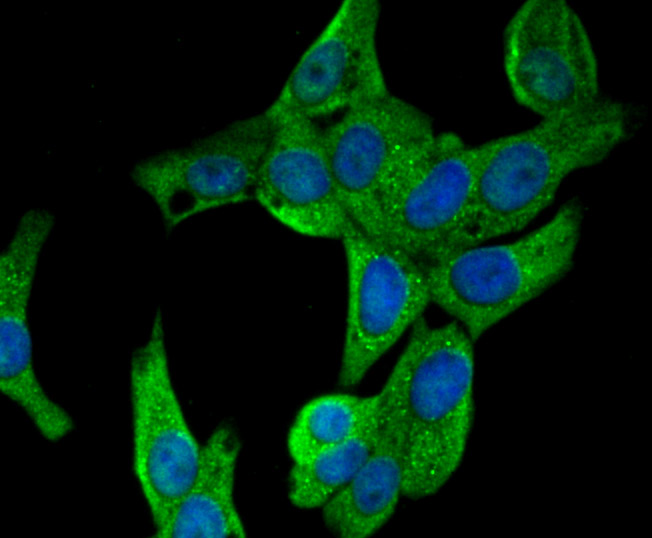
|
Fig1: ICC staining CD21 in LOVO cells (green). The nuclear counter stain is DAPI (blue). Cells were fixed in paraformaldehyde, permeabilised with 0.25% Triton X100/PBS. |
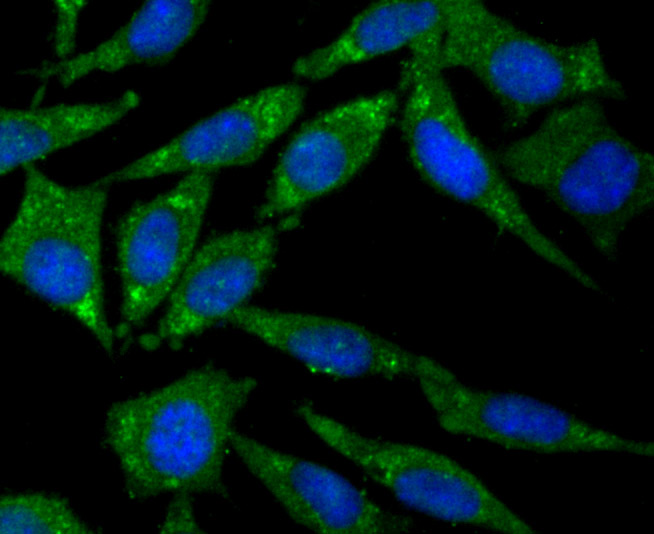
|
Fig2: ICC staining CD21 in SH-SY5Y cells (green). The nuclear counter stain is DAPI (blue). Cells were fixed in paraformaldehyde, permeabilised with 0.25% Triton X100/PBS. |
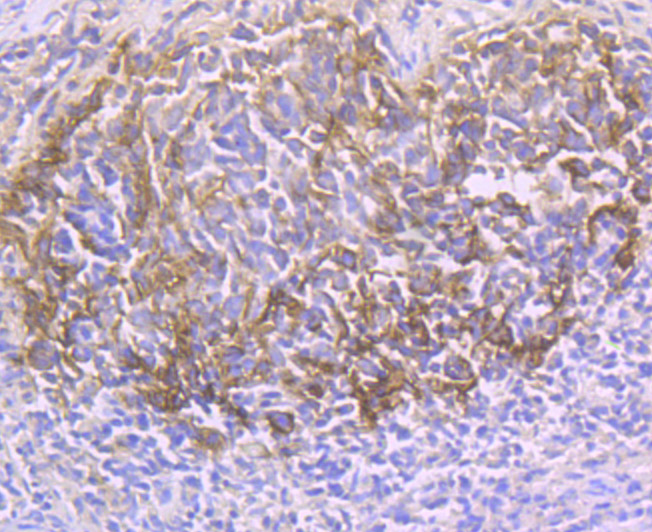
|
Fig3: Immunohistochemical analysis of paraffin-embedded human tonsil tissue using anti-CD21 antibody. Counter stained with hematoxylin. |
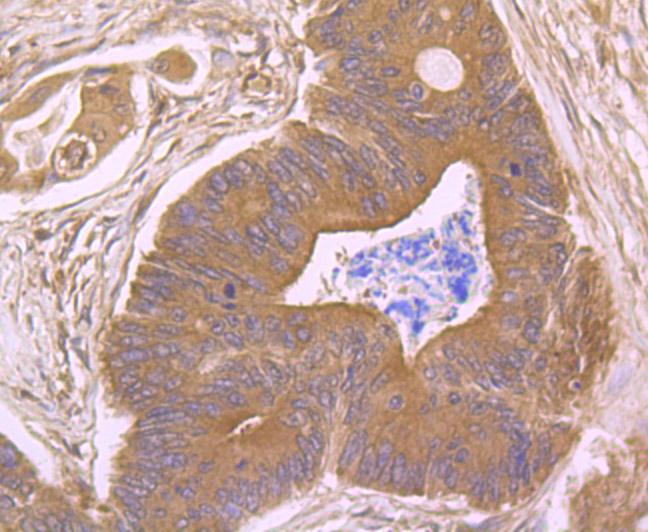
|
Fig4: Immunohistochemical analysis of paraffin-embedded human colon cancer tissue using anti-CD21 antibody. Counter stained with hematoxylin. |
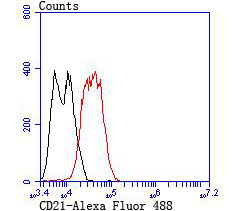
|
Fig5: Flow cytometric analysis of LOVO cells with CD21 antibody at 1/100 dilution (red) compared with an unlabelled control (cells without incubation with primary antibody; black). Alexa Fluor 488-conjugated goat anti-rabbit IgG was used as the secondary antibody. |
Note: All products are “FOR RESEARCH USE ONLY AND ARE NOT INTENDED FOR DIAGNOSTIC OR THERAPEUTIC USE”.